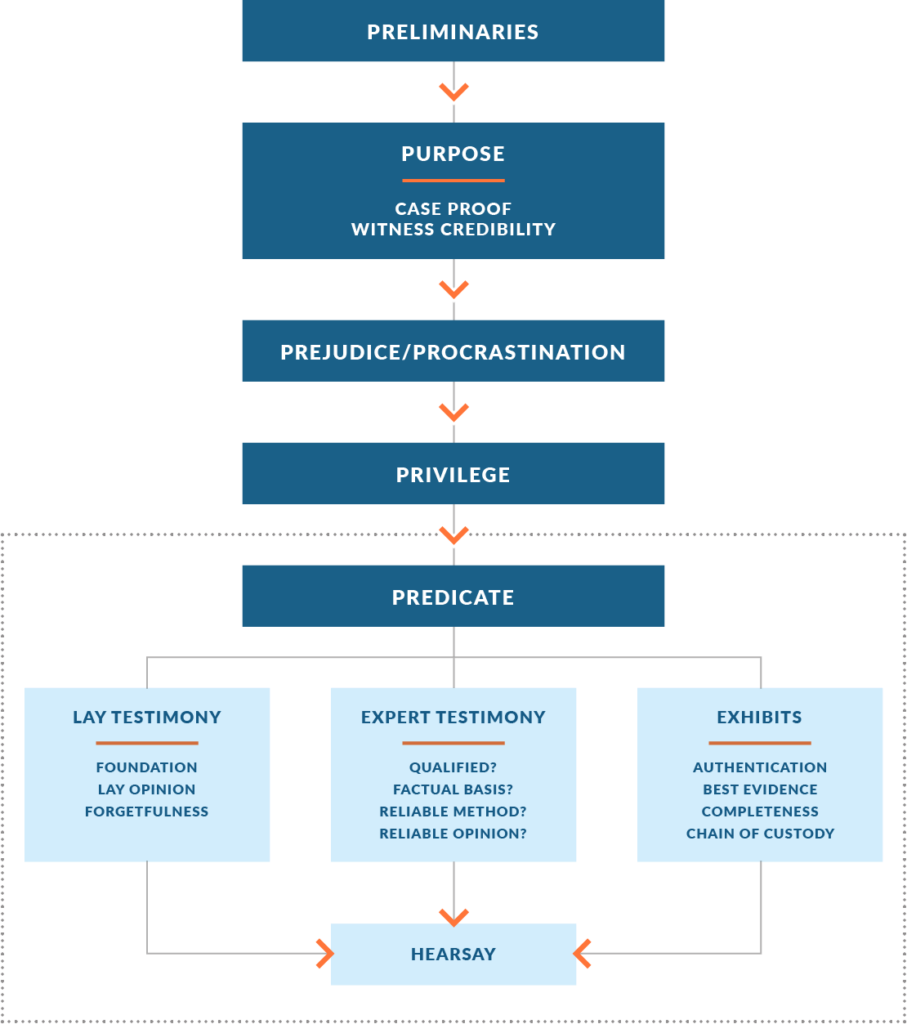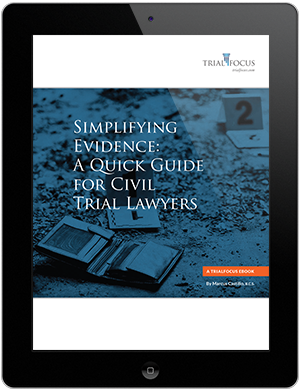In Part 1 of this series, I introduced the admissibility logic I use in my trial consulting practice. After addressing preliminaries, it turns to the all-important question: why am I or my opponent trying to introduce this evidence? What is the purpose? There are two purposes for introducing evidence: either to prove your case or disprove your opponent’s OR to impeach your opponent’s witnesses or rehabilitate the credibility of your own witnesses. Case proof and witness credibility. The twin purposes for introducing evidence.
In my Part 1 post I gave you the visual representation of this admissibility logic. In case you haven’t seen that post it’s attached below. When we think about case proof we are thinking about the elements of the causes of action (including damages) or the elements of the affirmative defenses. Once we’ve mapped out how we are going to prove or disprove these elements our attention needs to turn to the cast of characters on both sides of the case. You need to know whether they are convicted felons, have committed other “bad acts”, have given prior sworn testimony or have biases. Below you’ll find my tool “Simplifying Impeachment” which breaks down seven modes of impeachment commonly recognized in federal practice. It addresses whether the evidence is extrinsic or intrinsic (and explains what that means), whether the evidence can be used substantively (to prove the case) and other relevant concerns.
I hope to post the full evidence course to the TrialFocus website within the next month. The course is structured around the admissibility logic and hopefully will help you to think about evidence in a whole new way. You can preview the course contents by downloading the TrialFocus eBook, Simplifying Evidence.

Mastery of admissibility basics is fundamental to any civil trial practice. The mechanics of admitting text messages and emails fits into the broader admissibility logic we have developed and describe in our free e-Book.

Continue Reading
A New Way to Think About Evidence, Part 1. If you try cases, then admitting or objecting to the admission of evidence has to be in your life blood. Read more…
A New Way to Think About Evidence, Part 3 . Steps to becoming proficient in laying an evidentiary foundation to introduce evidence. Read more…


